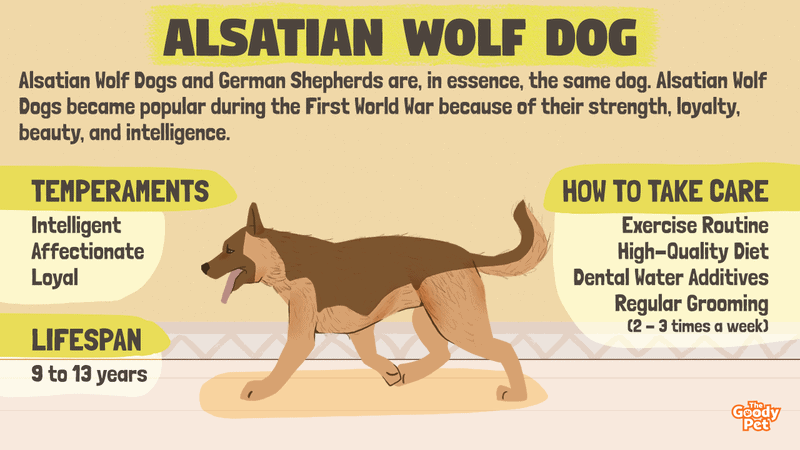The protective, calm, and confident demeanor of the German Shepherd dogs makes them “man’s best friends.” Instead of the name “German Shepherd” they now go by, these dogs were once referred to as “Alsatian Wolf Dogs.”
Max von Stephanitz is credited with first breeding and introducing the Alsatian Wolf Dog in Germany in the early 1900s to herd sheep, hence the name “German Shepherd.” German Shepherds and Alsatian Wolf Dogs are, in essence, the same dog. Alsatian Wolf Dogs became popular during the First World War because of their strength, loyalty, beauty, and intelligence.
German Shepherds were introduced to other parts of the world only after World War I but became particularly popular in Nazi Germany. After World Wars I and II, many countries didn’t want to associate these dogs with the wars, so they changed the German Shepherd’s name to “Alsatian Wolf Dog” or simply “Shepherd Dog.” Read on to learn more about the German Shepherd dog, its history, and many name changes.
What’s The Difference Between A German Shepherd And An Alsatian Wolf Dog?
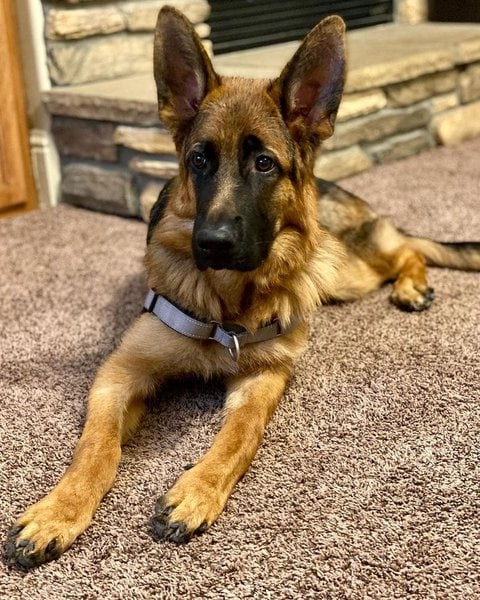
There is no difference between a German Shepherd and an Alsatian Wolf Dog. The only difference between them is the many names they have gone by throughout their history.
The Origin
German Shepherds originated in Germany in the early 1900s. After discovering a strong, intelligent, and loyal wolflike dog at a dog show, captain Max von Stephanitz bred that dog into the perfect working dog. As a result, the German government eventually favored the dogs in their military force.
Physical Appearance
German Shepherds have a close and dense double coat with a thick undercoat. The male dog weighs up between 77 to 95 lbs and can grow to reach between 24 to 26 inches in height. The female can weigh up between 55 to 73 lbs and grow as tall as 22 to 24 inches in height.
German Shepherds have different coat colors, ranging from black, sable, red & black, black & tan, black & silver, and gray. Apart from its typical short-haired appearance, it is very rare but still possible to see a long-haired German Shepherd.
German Shepherds have a long square-cut muzzle, a domed forehead, and a black nose. They also have large ears, bright medium-size eyes, and a long neck. The dog’s bushy tail reaches the hock, and they stand erect.
Lifespan
The average lifespan of a German Shepherd is 11 years. Due to the dog’s large and open ears, they often develop ear infections.
Apart from this, common ailments like hip and elbow dysplasia eventually cause arthritis that plague German Shepherds. However, under proper care and with lots of love, German Shepherds can live between 9 and 13 years.
Why Do British People Call German Shepherds Alsatians?
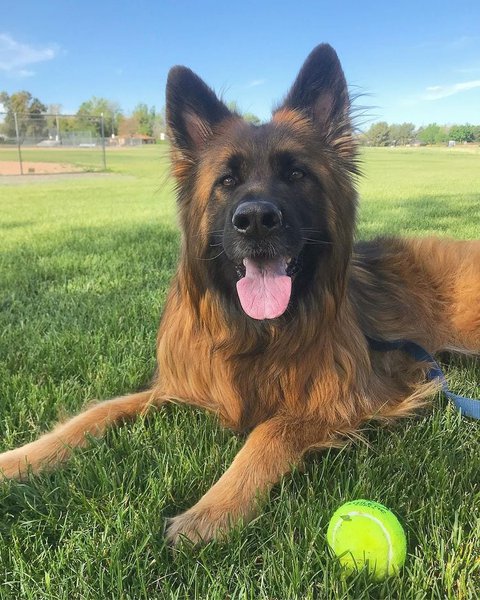
The British Kennel Club changed the name “German Shepherd” to the “Alsatian Wolf Dog” in 1919 because they started dissociating all things German after World War I.
After Stephanitz adopted and discovered the German Shepherd, he developed the standard for other German Shepherd breeds. These standards evolved into the breed’s foundation. After promoting the dog breed in other areas, the German military recruited thousands of German Shepherds into the German military during World War I.
Why Was “German Shepherd” Changed To “Alsatian”?
Some of the earliest breeds brought to Great Britain by soldiers returning from Germany were from the Alsace region of France.
As a result, the English decided to adopt the “Alsatian” as the dog’s name. Apart from this, the German Shepherd’s wolf ancestry provided a reason for adding the “wolf dog” phrase.
Why Did Alsatians Become German Shepherds?
The popularity of German Shepherd dogs in the United States surged after the First World War. However, due to the stigmatization of the Germans, the American Kennel Association changed the breed’s name to “Shepherd Dog” like it was in England.
Rin Tin Tin was a war-rescued German Shepherd that starred in more than 27 Hollywood films between 1918 and 1932. After war activities, dogs like Rin Tin Tin improved the German Shepherd’s reputation in the United States. As a result, the US changed the breed’s name from “Shepherd Dog” back to “German Shepherd.”
Is An Alsatian A Wolf?
An Alsatian Wolf Dog is not a wolf. Like all domestic dogs, the German Shepherd shares the wolf as a common ancestor, but it is not a wolf.
First Breeding
Wolves were not used to create German Shepherds. The first German Shepherd, Horand von Grafrath, discovered by Stephanitz, was a product of selective breeding. Horand fathered many pups, including Hektor. Hektor was then inbred with other offspring from Horand to produce the dogs Heinz von Starkenburg, Pilot, and Beowulf.
All these pups grew and gave birth to 84 pups, all of which were inbred with Hektor’s other pups.
During the breeding process, breeders separate dogs with specific and desirable qualities and let them breed in the same group. Therefore, the Alsatian is not a wolf. Instead, it is a product of inbreeding. Conversely, the Alsatian is bred to look exactly the way they look.
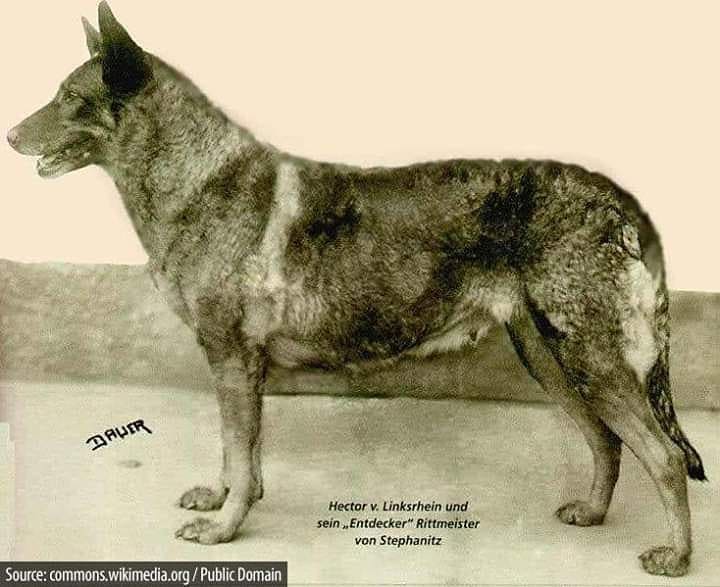
Can German Shepherds Be Mixed With Wolves?
People intentionally mix German Shepherds and wolves to make a wolfdog hybrid. However, breeding wolf dogs is extremely controversial worldwide because organizations like RSPCA and the Humane Society of the United States view wolf dogs as wild animals.
As a result, these organizations fight for the international ban on the breeding, possession, and sale of wolf dogs.
Wolf dogs can be a little crude and unpredictable. Unlike dogs, they can be dangerous and unsafe around children and pets. Due to their lack of education, owners find wolf dogs challenging to raise.
Plus, like wolves, wolf dogs are illegal as pets in most states in the US.
Are Alsatians Aggressive? Temperaments Of Alsatian Wolf Dogs
Alsatian Wolf Dogs are good guard dogs and make good pets. They are also intelligent, affectionate, and loyal to their owners. The dogs are obedient and, if taught, can be sociable pets.
Intelligence
The German Shepherds are famous for their intelligent traits. In his book The Intelligence of Dogs, Stanley Coren ranked German Shepherds third for intelligence. Over time, the breed has demonstrated the ability to obey an instruction 95% of the time after witnessing only five repetitions.
Alsatian Wolf Dogs have a kind and gentle demeanor. Your canine buddy is also willing and eager to learn. Although dominant, constant training will make a German Shepherd obedient throughout their life.
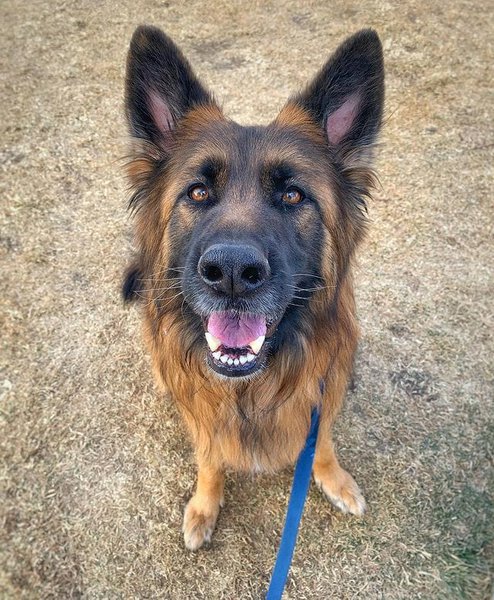
Guard And Protection
The intelligence of Alsatian Wolf Dogs, coupled with their strength, makes them the desired breed for use as police, search and rescue, and guard dogs. Plus, your furry companion can learn different tasks and interpret instructions with ease. As a result, police and military worldwide include German Shepherds in their ranks.
Recall that German Shepherds originally found employment in the military during the First World War. Although these dogs are not outrightly aggressive, their natural instinct is to protect the people they care about.
Alsatian Wolf Dogs also have tendencies to guard, qualifying them as natural watchdogs for alerting foreign intrusions and protecting their territories.
Temperaments
German Shepherds are self-assured and highly active dogs. They are also curious but can be overprotective if you don’t socialize them correctly. Nonetheless, these dogs are intelligent and obedient.
How To Take Care Of Your Alsatian Wolf Dog?
Elbow and hip dysplasia are common ailments that plague German Shepherds. However, your furry friend will remain healthy if you know how to care for your Alsatian Wolf Dog.
Exercise Routine
German Shepherds require daily exercise to stay healthy. Otherwise, they will become nervous and mischievous. Daily exercise and mental stimulation will keep your dog active.
You can personally take your pooch on walks, provide a free-range for unrestricted movement, or provide toys to keep your canine busy.
High-Quality Diet
Formulate your dog’s diet to meet your furry friend’s exercise and high-energy needs. To do this, I recommend consulting your professional nutritionist or veterinarian for advice on what to feed your Alsatian Wolf Dog and for the correct quantity.
Overfeeding your canine will eventually lead to weight gain that will cause joint problems. Pet Plate is ideal for dogs, thanks to their crave-worthy flavors and perfectly balanced, nutritious recipes.
Dental Water Additives
Dental water additives contain essential ingredients that protect your four-legged furry friend’s gum and teeth and prevent tartar. These additives work for bad breath in dogs and are easy to use. For example, you can add it to your dog’s water bowl every day. However, speak to your vet before use.
Grooming Tips
The German Shepherd sheds a lot. Although there is no magical solution to this, you can better manage by brushing your dog’s coat two to three times a week. You can also use FURminator to remove loose hair and combat dog shedding.
Related Questions
How Much Does An Alsatian Puppy Cost? The average Alsatian puppy costs between $900 to $1,500. This usually covers vet expenses, medical and genetic testing, papers, and other necessary supplies. Although some sellers offer Alsatian puppies as low as $200, dogs like these don’t come with papers and tend to suffer from health concerns from poor breeding conditions.
Can A German Shepherd Take On A Wolf? A lone wolf, even without a pack, will destroy a mature German Shepherd. Although strong, German Shepherds don’t have the strength and physique to withstand a wolf’s brute force or bite. A German Shepherd has an average bite force of 238 PSI, while a wolf has between 400 and 1,200 PSI. By implication, a wolf will easily kill a German Shepherd in a fight.
Is Owning A Wolf-Dog Legal? It is legal to own a wolf-dog hybrid in some states in the US and illegal in other states. Wolf dogs exhibit similar tendencies to the wolf. This includes a strong predatory instinct. As a result, the Federal Animal Welfare Act places restrictions and breed-specific regulations on wolf dogs. I recommend you check your state’s legislation about private wolfdog ownership and policies.

